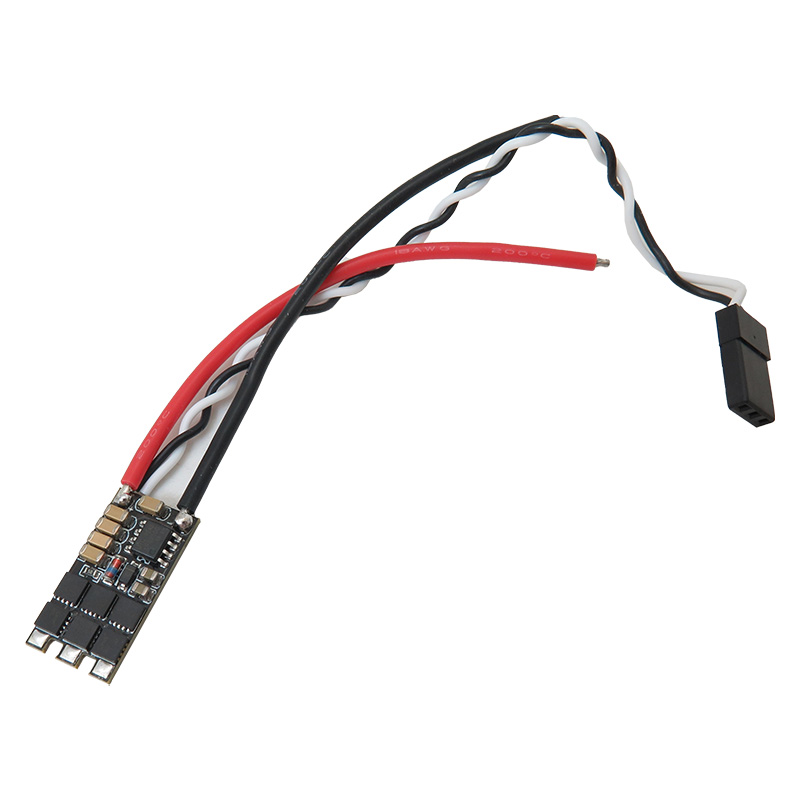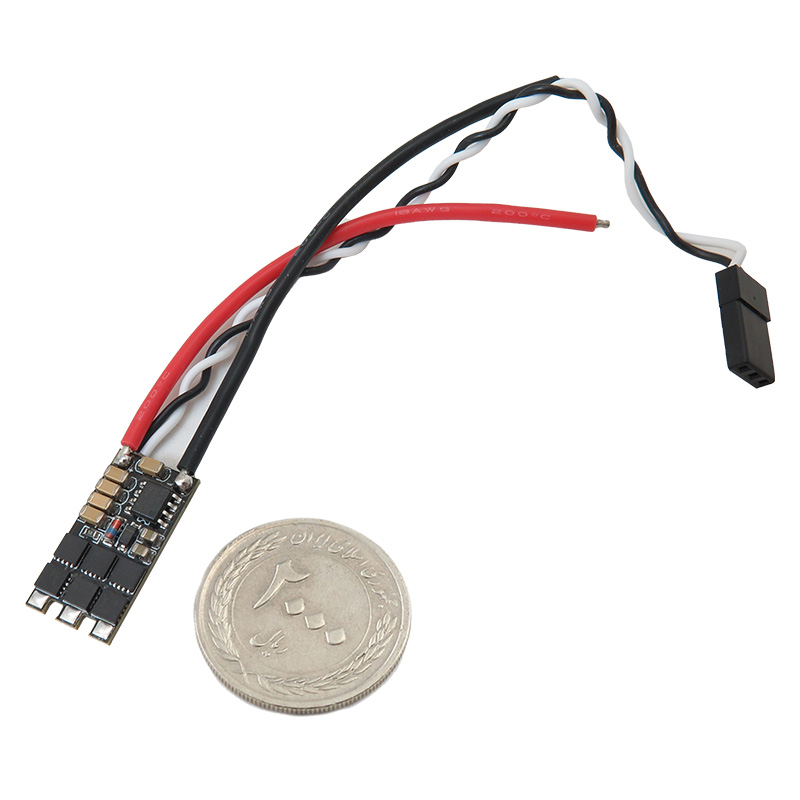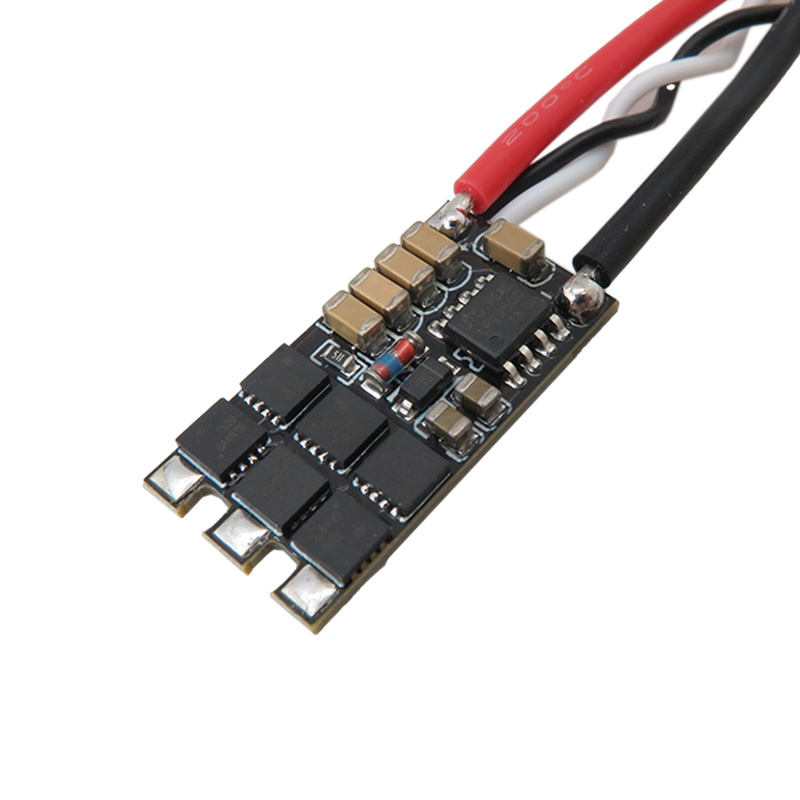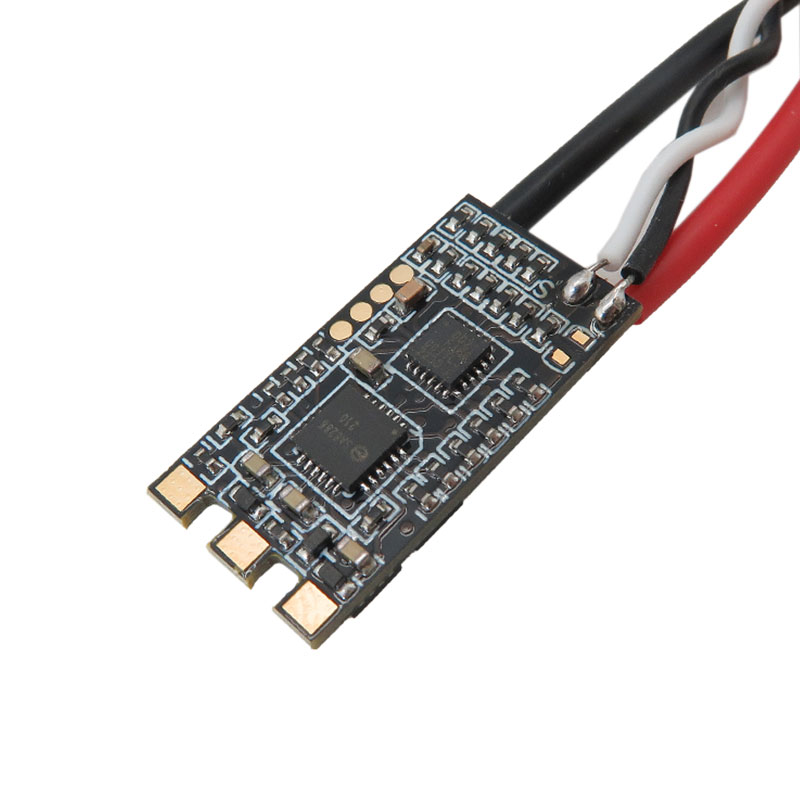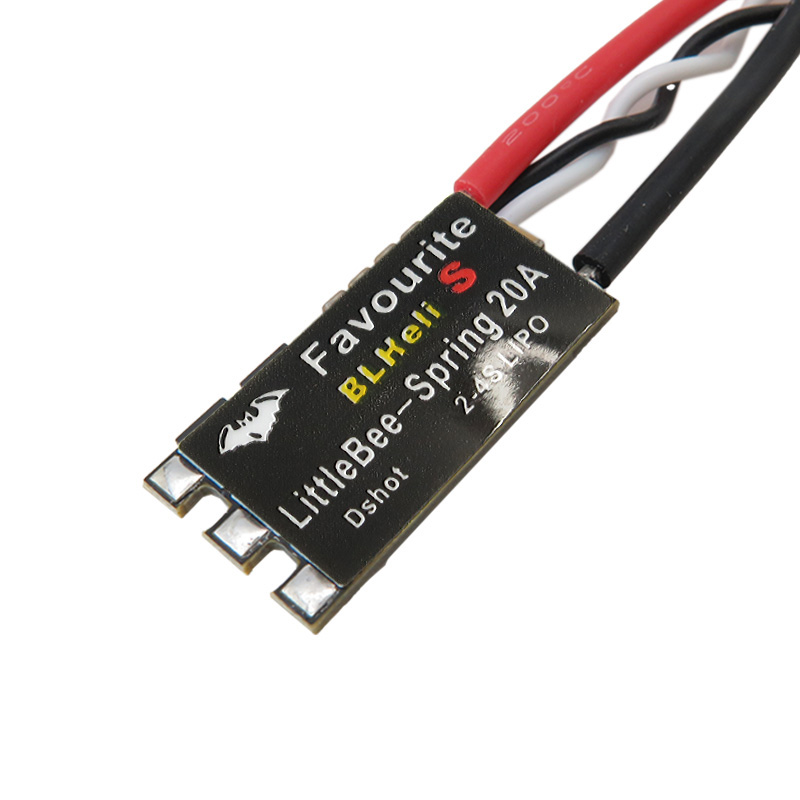625,520 تومان
در حال حاضر موجود نمی باشد
موجودی در حال ارسال به انبار
-
50 عدد1404/07/05
علاقه مندان : 7 نفر
وضعیت : فعال
تعداد مرجوعی : 1
دنبال کنندگان : 9 نفر
قدمت : 5 سال و 5 ماه و 18 روز
وزن : 8 گرم
کل فروش : 274 عدد
تعداد سفارش ها : 78 سفارش
هنوز هیچ رایی ثبت نشده است
اسپید کنترلر 20 آمپر DSHOT موتور براشلس محصول BLHELI
* تذکر : این پارت مدل BLHELI S تامین شده است *
کنترلکننده الکترونیکی سرعت یا (ESC)، یک مدار الکترونیکی است که سرعت یک موتور الکتریکی را کنترل و تنظیم میکند. همچنین این کنترلکننده میتواند با تغییر وضعیت موتور به حالت ژنراتوری، برای موتور ترمز الکتریکی فراهم کند. در این فرایند موتور به صورت یک ژنراتور عمل کرده و انرژی جنبشی موتور را به انرژی الکتریکی تبدیل میکند که این امر باعث کاهش انرژی مکانیکی روتور و در نتیجه کاهش سرعت آن میشود. اسپیدکنترلر دارای چند بخش اصلی می باشد. یکی از بخش ها وظیفه پردازش داده ها را دارد و تصمیم می گیرد که سیگنال را به کدام درایورها بفرستد. بخش بعدی تامین ولتاژ سوییچ و قطع و وصل جریان عبوری از ترانزیستورها می باشد. در نهایت باید به پایه های موتور متصل شود و دور موتور را کنترل کند.
کنترلکننده الکترونیکی سرعت یا (ESC)، یک مدار الکترونیکی است که سرعت یک موتور الکتریکی را کنترل و تنظیم میکند. همچنین این کنترلکننده میتواند با تغییر وضعیت موتور به حالت ژنراتوری، برای موتور ترمز الکتریکی فراهم کند. در این فرایند موتور به صورت یک ژنراتور عمل کرده و انرژی جنبشی موتور را به انرژی الکتریکی تبدیل میکند که این امر باعث کاهش انرژی مکانیکی روتور و در نتیجه کاهش سرعت آن میشود. اسپیدکنترلر دارای چند بخش اصلی می باشد. یکی از بخش ها وظیفه پردازش داده ها را دارد و تصمیم می گیرد که سیگنال را به کدام درایورها بفرستد. بخش بعدی تامین ولتاژ سوییچ و قطع و وصل جریان عبوری از ترانزیستورها می باشد. در نهایت باید به پایه های موتور متصل شود و دور موتور را کنترل کند.
اسپیدکنترلر LittleBee با استفاده از پردازنده Silabs و تراشه های درایور اختصاصی، کارآیی عالی و قابلیت ترمز استثنایی را ارائه می دهد.
حالت Damped این امکان را فراهم می کند تا سرعت موتورها در پاسخ به گاز throttle بسیار سریعتر کاهش یابند. این حالت، پرواز با ثبات تر و واکنش بهتر به throttle decreases را فراهم می کند. Oneshot125 یک پروتکل ارتباطی متفاوت و سریعتر بین کنترل کننده پرواز و ESC در کوادکوپترهاست. این پروتکل اجازه می دهد تا FC سریعتر دستورات کنترل را به موتور بفرستد، بنابراین multirotor باید بهتر عمل کند. پیکربندی LittleBee بسیار ساده است. با استفاده از کامپیوتر و برنامه نویس USB خود می توانید تنظیمات را تغییر داده و firmware را فلش کنید. برای این منظور می بایست مجموعه BLHELI و درایورهای مورد نیاز توسط ابزار برنامه نویسی USB خود را دانلود کنید.
وجه تمایز اسپید کنترلر تقلبی از اصلی به راحتی قابل تشخیص است. دراسپید کنترلر تقلبی PCB به شکل مات است در حالی که در مدل اصلی LittleBee ESC پی سی بی دارای کیفیت بالا براق و صاف است.
کاربرد اسپید کنترلر موتور براشلس :
- پروژه های هوافضا
- سیستم های مدل پروازی
- هلیکوپترها
- قایق
مشخصات اسپید کنترلر 20 آمپر DSHOT :
- نام: FVT LittleBee 20A-S ESC
- ولتاژ ورودی: 4-2 S lipo
- جریان کار: 20 آمپر
- سایز : 23*12
- وزن: 7 گرم
- سیستم عامل: BLHELI
- پشتیبانی از حالت Damped، Oneshot125، Dshot600
- پشتیبانی از حالت استهلاک، Oneshot125، Oneshot42 و Multishot
- مدار مجتمع اصلی: جعبه SILABS، MCU در 48 مگاهرتز
- MOS: پایه های کناری پایین و بالا Nfet هستند
- سرعت سوئیچینگ بسیار سریع است، دارای یک تراشه درایور اختصاصی.
Description:
An ESC or an Electronic Speed Controller controls the brushless motor movement or speed by activating the appropriate MOSFETs to create the rotating magnetic field so that the motor rotates. The higher the frequency or the quicker the ESC goes through the 6 intervals, the higher the speed of the motor will be.
when the moving magnetic field of the rotor passes through the free coil or the one that’s not active, it will induce a current flow in coil and as result, a voltage drop will occur in that coil. The ESC captures these voltage drops as they occur and based on them it predicts or calculates when the next interval should take place.
LittleBee is using the Silabs processor and fast dedicated driver chips, providing excellent freewheeling and exceptional braking capabilities.
LittleBee 20A is capable of running up to 6s setups. Damped mode allows your motors to respond to throttle decreases much quicker, allowing for more stable flying, and higher response to throttle decreases. Oneshot125 is a different and faster communication protocol between the flight controller and the ESC on your quadcopter. It allows the FC to send control commands to the motor quicker, therefore in theory your multirotor should perform better. The configuration of the LittleBee is very simple. Using your pc and USB programmer, you can change settings and flash the latest firmware at the touch of a button. You will need to download the BLHELI suite, and the drivers required by your USB Programming tool. You can easily spot the fakes, as they come with matte PCB finish, whereas original LittleBee ESC has a nice and smooth glossy finish.
Application:
Electric cars
Electric bicycles
Electric aircraft
Cars
Helicopters
Airplanes
Boats
Quadcopters
Features:
Name: FVT LittleBee 20A-S ESC
Input Voltage: 2-4S Lipo
BEC Output: none
Working Current: 20A
Size: 23*12
Weight: 7g
Firmware: BLHELI
Support Damped Mode, Oneshot125, Dshot600
Support depreciation mode, Oneshot125, Oneshot42, and Multishot
Main integrated circuit: SILABS box, MCU at 48 MHz
MOS: bottom and top side fets are Nfets
Switching speed is very fast, it has a dedicated driver chip
